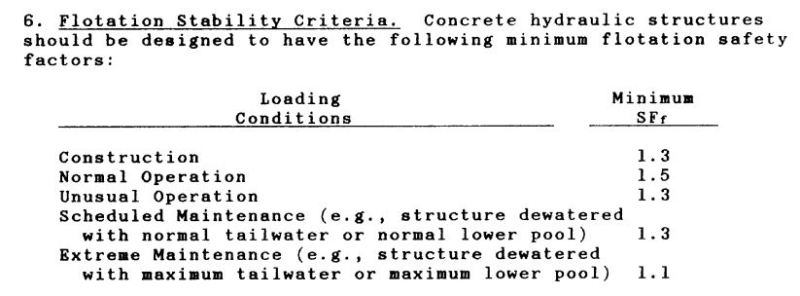HI everyone....
i have a basic question confuse me long time.
U=1.4(D+F)...............(1)
U=1.2(D+F+T)+1.6(L+H)+0.5(Lr or S or R)....(2)
U=1.2D+1.6(Lr or s or R)+(1.0L or 0.8 W)...(3)
U=1.2D+1.6W+1.0L+0.5(Lr or S or R).........(4)
U=1.2D+1.2F+1.0E+1.6H+1.0L+0.2S............(5)
U=0.9D+1.2F+1.6W+1.6H......................(6)
U=0.9D+1.2F+1.0E+1.6H......................(7)
First, according to what loading i have and fill in load combination to calcualte
if i dont have live load thal L=0 fill in.
my point is if i dont have wind load and earthquake why i must use load combination 4~7 ?
In my opinion the load factor in 4~7 were calculated cause effected by short term load (wind ,earthquake)
if we dont have W and E , use W=0 , E=0 fill in 4~7 reasonable?
thanks for you help
i have a basic question confuse me long time.
U=1.4(D+F)...............(1)
U=1.2(D+F+T)+1.6(L+H)+0.5(Lr or S or R)....(2)
U=1.2D+1.6(Lr or s or R)+(1.0L or 0.8 W)...(3)
U=1.2D+1.6W+1.0L+0.5(Lr or S or R).........(4)
U=1.2D+1.2F+1.0E+1.6H+1.0L+0.2S............(5)
U=0.9D+1.2F+1.6W+1.6H......................(6)
U=0.9D+1.2F+1.0E+1.6H......................(7)
First, according to what loading i have and fill in load combination to calcualte
if i dont have live load thal L=0 fill in.
my point is if i dont have wind load and earthquake why i must use load combination 4~7 ?
In my opinion the load factor in 4~7 were calculated cause effected by short term load (wind ,earthquake)
if we dont have W and E , use W=0 , E=0 fill in 4~7 reasonable?
thanks for you help

